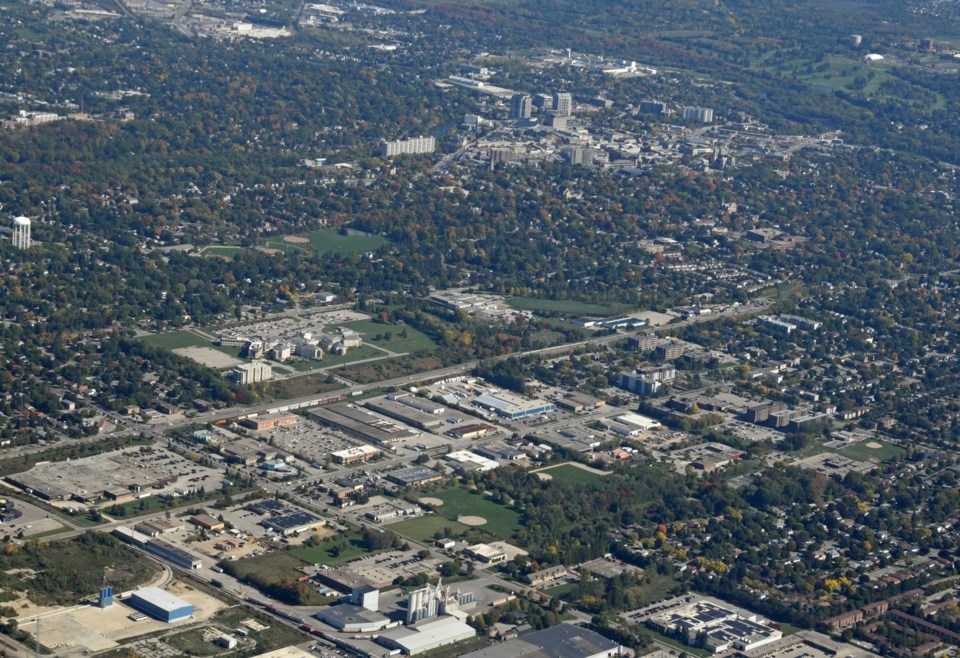(Editor's note: An earlier version of this column questioned whether Jennifer Keesmaat addressed the issue of affordable housing in her presentation at Guelph 20141: A conversation about a growing city. Keesmaat did in fact talk about housing affordability, the need for housing people can afford throughout their lifetime, and that affordable housing should be part of the vision and public policy of a municipality.)
Last Thursday, many of the city’s luminaries gathered at the Delta Hotel and Conference Centre to hear a discussion about the future of Guelph and how best to plan for it.
It was one of those events I’ve come to despise because it presents Guelph as someplace that doesn’t actually exist in the practical reality. Guelph, as a place that’s discussed at these sorts of events, is imaginary, and to see officials from the City of Guelph take part in it and applaud was, frankly, a little much.
The main guest was former City of Toronto planner Jennifer Keesmaat, who has some fairly interesting ideas about the use of space and transportation, but as Toronto’s Chief City Planner she also oversaw a tremendous period of gentrification and housing inequality in that city. If councillors are looking for a hero to promote more affordable housing in Guelph then I’m not sure Keesmaat is a success story.
There’s an inherent class divide in her planning ideas because I’m not sure Keesmaat’s idea of good planning applies to everyone.
At Keesmaat’s talk, there was certainly a lot of conversation about walkable neighbourhoods, great parks, and access to active transportations. Frankly, these are all things that are only important to anyone that already has a place to live, and has enough money left over at the end of the day to be able to afford three-square meals.
In other words, if you can play the market, then you can negotiate for more perks like the ones mentioned above, but if you don’t have the cash, you’re going to get whatever housing we can throw together, and P.S., we hope you like tiny homes because that’s all we’re willing to give you.
In this presentation, the world of great city planning is a world where cost is no object for anyone, and while many members of city council seemed to enjoy Keesmaat’s talk, they didn’t seem to recognize the irony of it.
It was just last month that council refused to endorse a plan for 700-units on Whitelaw even though it sits on a main road near three transit routes and lies within a 10-minute walk of shopping, dining, and recreational amenities. By Keesmaat’s own measurements, this Whitelaw development was a slam dunk. All that was missing was LeBron James hanging off the rim.
The idea that Guelph is a town that loves plans, and loves executing on good planning must also be tested after recent events.
Another recent planning meeting snafu involved council defeating a plan to build a six-storey building with 86 units at the corner of Gordon Street and Lowes Road. Gordon Street is identified in the Official Plan as an intensification corridor, which means, you know, it’s going to be intensified. As with the recent dog park debacle, it’s interesting how plans fall apart when a handful of people don’t like them long after they’ve been approved.
Embracing the city of the future means recognizing that changes are coming, and the last thing that Guelphites seem to like is change. Most human beings bristle at change of course, but this city seems to be actively working against it. We bemoan the loss of a neighbourhood’s character, or the sight lines of a church, and we see them as just cause to refuse the construction of more housing.
Meanwhile, our vacancy rate is 1.4 per cent, which is half the national average, and we can’t seem to understand why housing prices are so high.
Here’s an idea: if you don’t like the changing character of Guelph, let’s bulldoze every building and re-create the wilderness that greeted John Galt and his party in 1827. That’s as equally reasonable as expecting this town to look the same as it did in the 1960s when Guelph had half the people it has now.
At least half of planning is accepting that the plan will eventually be enacted, and that coming up with the plan is more than just a theoretical exercise. If you like world building, write a fantasy novel. Planning at a government level isn’t supposed to be imaginary.
For me though, the most aggravating part of the event for was when Keesmaat touted the benefits of creating car-free communities, and then watching the entire room burst into enthusiastic applause. I couldn’t help but fume knowing that all those people applauding were going to get into their private automobiles at the end of the night even though there are six bus stops within a five-minute walk from the venue.
Now don’t get me wrong, I like planning too, you could say that I love it when a plan comes together, but the inevitable result of making a plan is that the plan is going to come to fruition. Also, the plan is a plan for everyone; you can’t tout going car-free without giving up your own car.
Hopefully, Keesmaat’s talk will be taken as a challenge for everyone to embrace planning… for a change.
